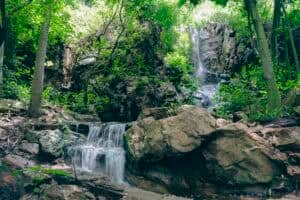The management of the perennial rivers was the most positive story of the drought, said Dr Izak Smit of the KNP’s Scientific Services.

One of the biggest lessons learnt from the Kruger National Park (KNP) drought was that communication must be key in every endeavour if it is to be successful.
Call it a “soft finding”, if you will, but without regular communication between various facets of government, interest groups, and KNP staff, the impact of the recent drought would have been much worse.
That’s according to KNP’s Scientific Services’ Dr Izak Smit, who believes the park and conservation science came out stronger than in previous years of drought.
It’s difficult to argue with numbers. During the 1991-92 drought, 14 000 of the about 30 000 buffaloes were wiped out in two years. This time, about 36 000 remained from a base of about 48 000 – about 12 000 buffaloes perishing over a much longer period.
For the water-dependent hippo, the fatality numbers dropped from about 6 500 to about 3 500.
“After the drop, the numbers were still somewhat higher than during the homogeneity period,” says Smit. “The hippos which survived the drought must be incredible animals.”

A terrapin crosses the road in search of water in the Kruger National Park. Photo: Amanda Watson
For Smit, an interesting realisation was the lower the animal density, the higher the risk of fire.
“If you look at this savanna system of trees, grass and the animals, think of it as a symphony. And the instruments in this symphony are fire, droughts, and elephants, which shape the whole thing. If you only have high rainfall all the time, your system will switch to something quite different,” Smit says. “So it’s really quite important to have these dry cycles as well.”
Now, it’s the most disease-resistant and least water-dependent animals which have survived.
Three key lessons were learnt, Smit says.
“These were around the rivers; the herbivore response during the drought, which happened during the different management style (so it was an important opportunity), and thirdly, surprises. There are always surprises you cannot predict,” says Smit. “The management of the perennial rivers was the most positive story of the drought.”
During the entire 10-year period, Kruger’s major rivers never ran dry and far from people preparing to go to war over the scarce resource, with a bit of planning and real-time communication enabled by technology, it doesn’t have to be that way.

The Kruger National Park remains dry even after some rain this year. Photo: Amanda Watson
“Monitoring, communication, and relationships were key to the rivers not drying up. The KNP sits downstream from all the catchment areas and Mozambique sits even further downstream, with zero catchment area,” Smit says.
“We have an international obligation to make sure water goes through the park, and when people say, ‘Look at all this water going to waste’ – how on earth can you think like that? It’s a very unethical way of thinking.”
There are 20 water measuring stations in the park. The most important are on the perennial rivers – Crocodile, Sabie, Olifants, Letaba and Luvuvhu.
The stations were checked daily, Smit said. He noted that each time a “worry level” was reached, there were certain engagements until a water release from a dam was requested. These engagements could entail ever-increasing water restrictions until the water release was absolutely needed.
“Kruger performed a watchdog role at the bottom of the catchment and it fell to water catchment agencies and water users’ associations for the required action,” Smit says.

A water level monitoring station on the Sabie River in Kruger National Park. Photo: Amanda Watson
In this way, and using WhatsApp groups to monitor and warn of water releases, everyone benefitted and were kept safe downstream.
This meant the real problem for the park’s animals became the lack of food. Although watching animals die by the thousands was difficult, the “new” park management policy begun in 1994 and refined again this year – which focuses on ecosystem welfare instead of maintaining a stable state of fauna and flora, or homogeneity (think culling) – was working.
The closing of artificial waterholes since 1997 meant animals had to walk further to find food. This weeded out the sick, the old and the weak.
“We postulated that by closing waterholes we will reduce the mortality rate. For us it was quite a strong validation of our changed management philosophy.”
INFO
- In the past four years, the Kruger National Park (KNP) had one year of below average rainfall – estimated at 65% of the average rainfall.
- In the next year the drought arrived, during which time time about half the average rainfall was recorded.
- A drought has cycles and fluctuations of its own. So one year of above-average rainfall does not necessarily mean the drought is over, just as much as a year of below-average rain does not make for a drought in a wet cycle.
- People are fixated on the rainfall. But what the conservationists need to consider along with the rainfall are the temperatures.
- If it’s really hot and there is low rainfall, the plant transpiration is quite different than in other circumstances.
- During the 1991-92 drought, 74 days were recorded with temperatures above 35C and seven days above 40C.
- In this recent drought, there were temparatures of 36C and 29C.
For more news your way, download The Citizen’s app for iOS and Android.






